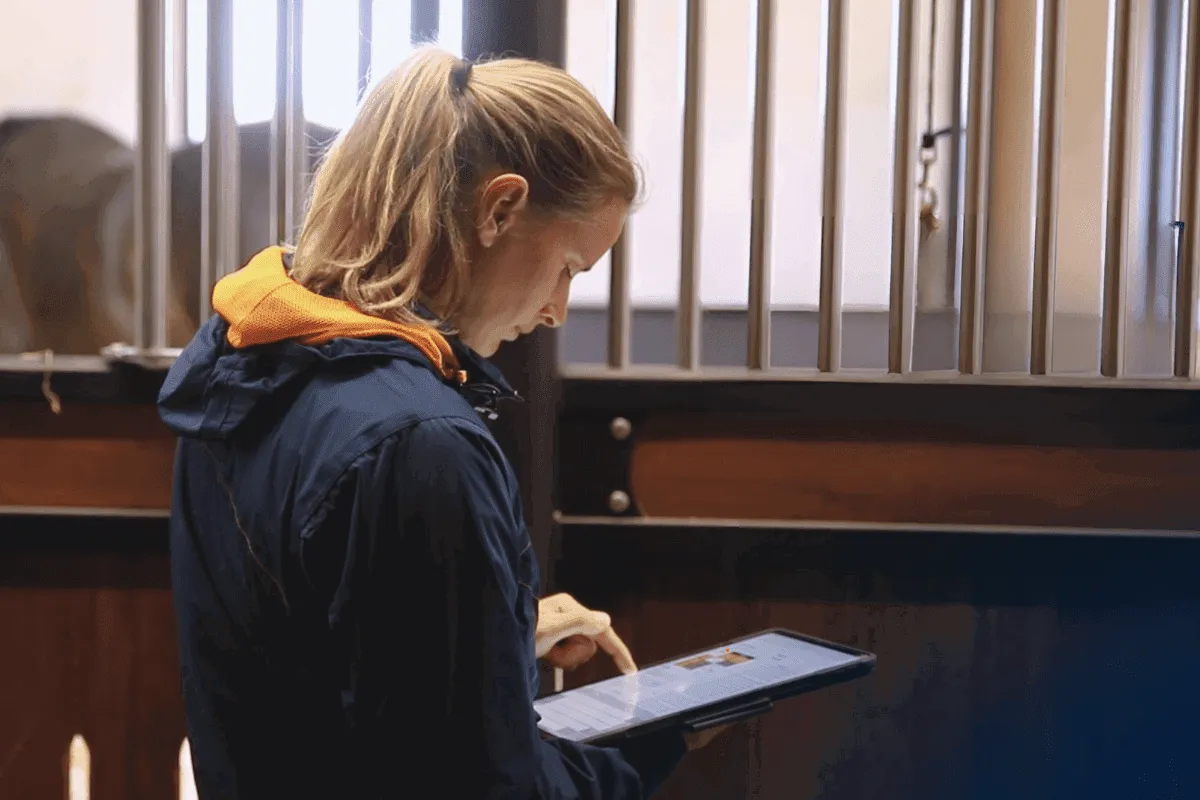Horses need healthy hooves. After all, they carry their whole weight on their hooves day and night. The work involved in any equestrian discipline will place great stress on the horse’s hooves. A healthy hoof has elasticity and reduces the ground impact to be absorbed by the skeleton. They are literally a horse’s shock absorbers. But what if your horse has hoof problems due to laminitis? In this Science Sunday we discuss laminitis.
The word ‘laminitis’ suggests that it is specifically a hoof problem. However, nothing could be further from the truth, because in most cases this is a metabolic disease. Or a metabolic issue. A horse with laminitis will move stiffly and have abnormally warm hooves and an elevated digital pulse. In advanced stages, the horse often adopts an odd, backward-leaning stance to avoid pain in his sensitive hooves.
Inflammation of the laminae
Laminitis can have various causes, including colic, underlying diseases, infections, obesity, and intestinal disorders. These conditions often lead to metabolic disorders, increased inflammation, and the release of toxins into the blood. In the hoof, these substances reduce blood circulation and cause the laminae to become inflamed.
The laminae form the connection between the pedal bone (distal phalanx) and the hoof wall. Inflamed laminae cause swelling and considerable pain. In severe cases, there is the risk that the laminae will loosen, allowing the pedal bone to descend or rotate. The pedal bone is no longer supported and so it tilts, with the tip pushing against the sole, in very severe cases even penetrating the sole. A horse that has had laminitis runs a high risk of contracting it again, and so requires treatment that often must be continued for the rest of the horse’s life.

Various causes
There are many blood vessels in the hoof, so any infection or metabolic disorder arising elsewhere in the body can eventually affect the hoof as well. This also explains why laminitis occurs during illness or colic, after a serious injury, or after foaling. If placental expulsion takes longer than six hours, it can cause severe inflammation in the uterus, leading to toxins in the blood which can cause laminitis. However, the best known and most common causes are diet and metabolic diseases including obesity and insulin dysregulation.
Feeding and laminitis
We’ve all heard that horses can get laminitis from eating too-rich grass or too much grain. Both are high in easily digestible sugars. The activity of eating (any kind of food) starts the digestive process. However, excess sugar cannot all be digested in the small intestine, and so it passes into the large intestine where it is quickly fermented into lactic acid. The excessive production of lactic acid causes the intestine’s pH level to drop, disrupting the healthy microflora in the intestine. These intestinal disorders in turn cause the release of endotoxins (components of dead bacteria). Once these endotoxins enter the bloodstream, they cause immune and metabolic disorders. These disorders effect tissue in the entire body, including the hoof where it can cause laminitis.
Metabolic diseases
Horses that become laminitic through diet are not always overweight. Horses with metabolic diseases often are. Obesity, for example, increases the risk of laminitis in two ways. First, the excess weight puts extra pressure on the delicate connection between the pedal bone and the hoof wall. Second, fat is not harmless tissue but is quite active. Indeed, fat tissue plays an active role in various metabolic processes in the horse’s body. As a result, excess fat can lead to chronic inflammation, metabolic disorders, and insulin resistance in various tissues.
Laminitis: Prevention over cure
-
Adjust your horse’s feed
Laminitis can be caused by (excessively) high sugar and starch content in feed. A healthy, balanced diet will help prevent laminitis, so get advice from experts.
-
Grazing in moderation only!
A horse that is sensitive to laminitis can be turned out, but with limitations. Tape off a portion of the pasture so that your horse cannot overeat and has a ‘new’ patch of grass every day.
-
Maintain a healthy weight
Horses and ponies that are overweight are more likely to develop laminitis, so keep a close eye on your horse’s weight. Did you know that you can easily calculate your horse’s weight without a scale? Read our previous article about healthy weight here.
-
Let your horse get plenty of exercise
Exercise is always important, but all the more so for susceptible horses. In laminitis, the blood circulation in the hoof is disturbed. Exercise ensures good blood circulation and better lymphatic drainage, which helps to remove toxins.
Advice from our experts: Treat inside and out
Does your horse suffer from sensitive hooves? Consult your vet! And adjust your horse’s diet and exercise. Feed your horse only poor, long-stalked forage. That means no concentrate feed and no grazing for now! Make sure your horse has soft ground on which to stand. If possible, motivate him to keep moving, as this stimulates the blood circulation and accelerates healing.
Sensitive hooves can be a consequence of disturbed metabolism and insulin dysregulation.




